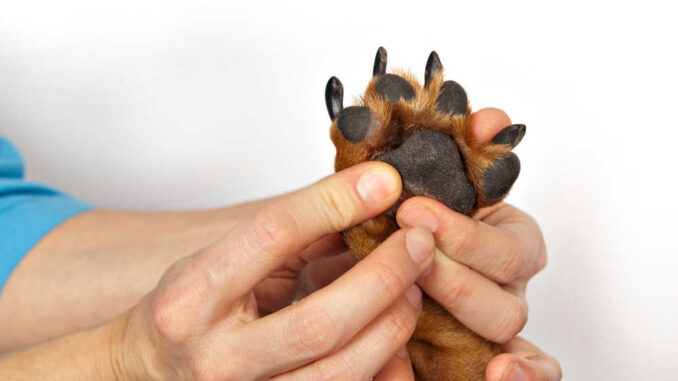
This article was updated on September 28th, 2023

A yeast infection, or yeast dermatitis, is usually caused by the fungus “Malassezia pachydermatitis”. They are a normal part of the skin in small numbers but cause skin inflammation when overgrowth occurs.
In this article, we will review several pictures of yeast infection on dogs, along with advice and tips from our veterinarians.
Where do yeast infections occur? [Pictures by location]
Infections can occur anywhere on the body but are most common in moist areas or skin folds, like ears, elbows, paws, and facial folds in certain breeds:
1. Paws
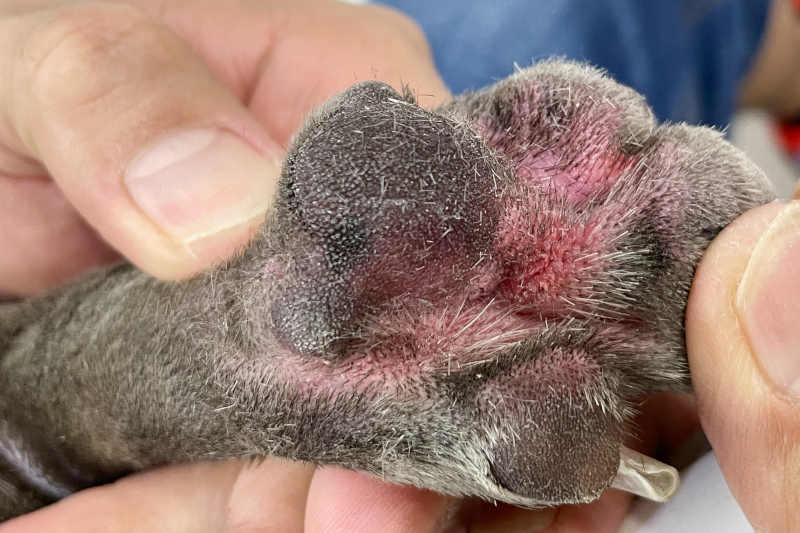
Yeast infections are also common on dogs’ paws, specifically between their toes. Like yeast ear infections, the skin between the toes is itchy, red, and inflamed. Owners typically notice their dogs licking at their paws excessively and then see the inflammation between the paw pads.
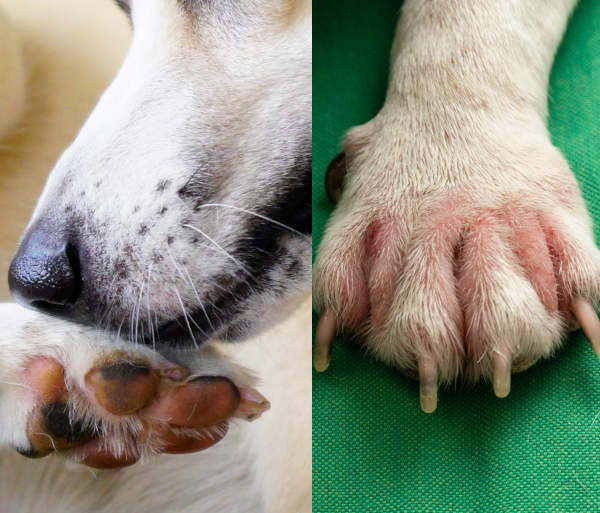
The redness can be challenging to see in dogs with lots of hair, but the yeasty smell is unmistakable. This picture shows a common location to see redness and inflammation with a yeast infection on the paw:
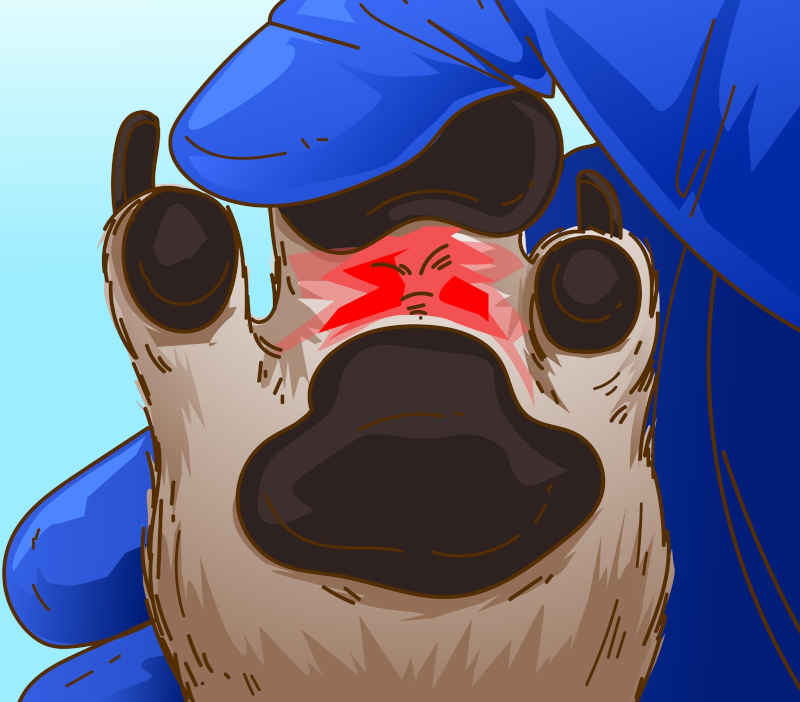
Redness is often best seen on the bottom side of the paw and in between the toes. Remember you may have to part the hair in long-hair dogs.
View more pictures of paw yeast infections with veterinarian advice.
2. Ears
Yeast ear infections are common in veterinary practice; as a veterinarian, I would get multiple cases of ear infections each day. Moderate to heavy blackish-brown discharge is common with yeast ear infections, as seen in the image below:
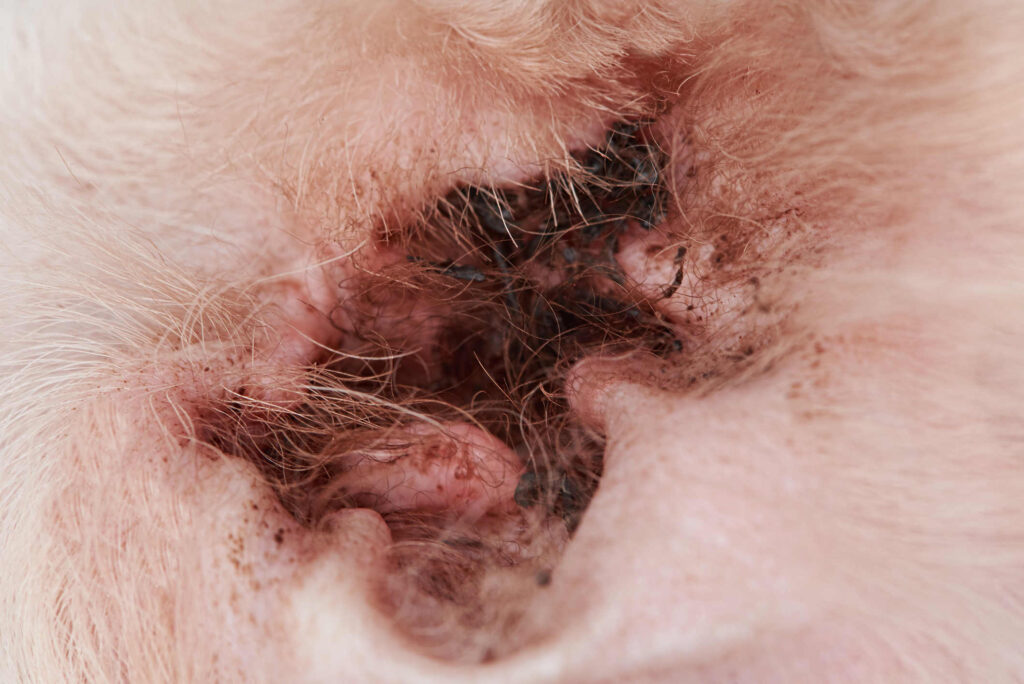
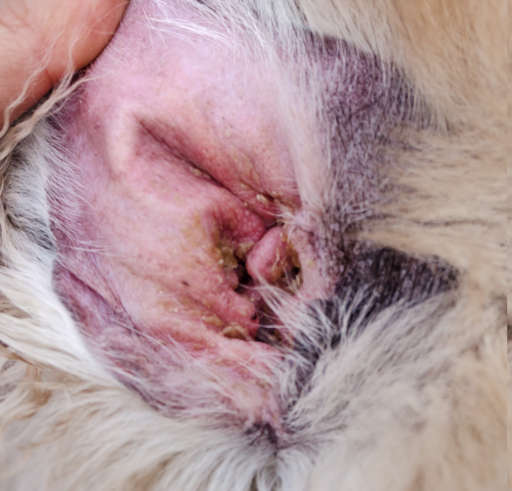
While some ear infections may be a mixture of bacteria and yeast, many have just yeast present. The dog is often extremely itchy in the infected ear and has red, inflamed skin with blackish-brown discharge from the ear canal. There is typically a distinct cheesy or musty smell coming from the ear.
View more pictures of ear yeast infections.
3. Facial folds
Brachycephalic breeds, or those with squished faces or wrinkly skin, tend to have more significant skin folds than other dogs. These skin folds provide the perfect environment for yeast overgrowth since they are often deep pockets that retain moisture.
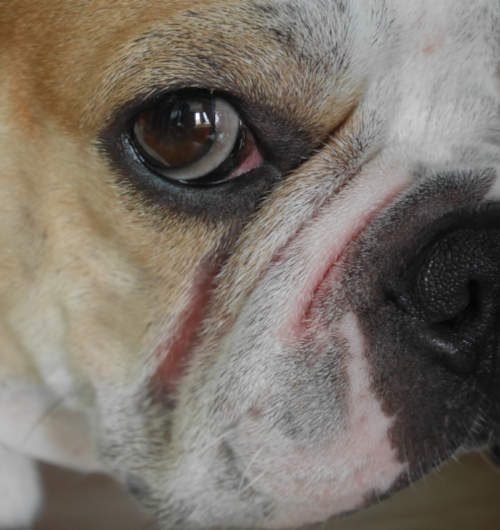
Affected breeds include Pugs, Shar Peis, bulldogs, boxers, Pekingese, and some spaniels and hounds. The skin folds in facial fold yeast dermatitis are typically red and moist and can even seem greasy.
4. Belly
For most dogs, yeast infections on bellies are caused by underlying issues such as hormonal disorders, parasites or allergic skin disease. Learn more about Belly Yeast Infections in Dogs.
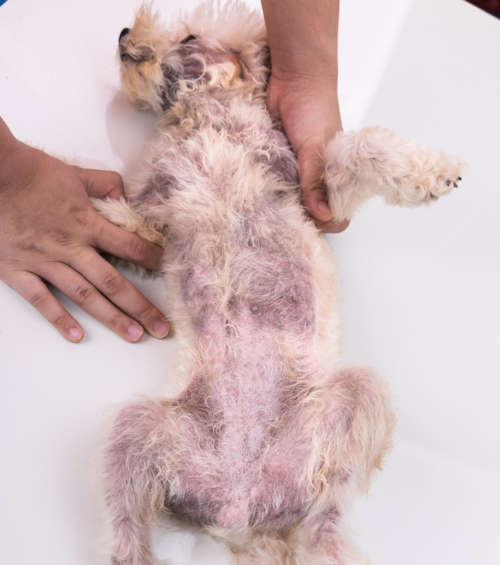
Signs That Your Dog Has a Yeast Infection (with Pictures)
If your dog has a yeast infection, you may notice redness, crusts or flakiness, a musty odor, and often a moist discharge. The most common symptoms of a yeast infection on the skin include:
- Red, itchy skin
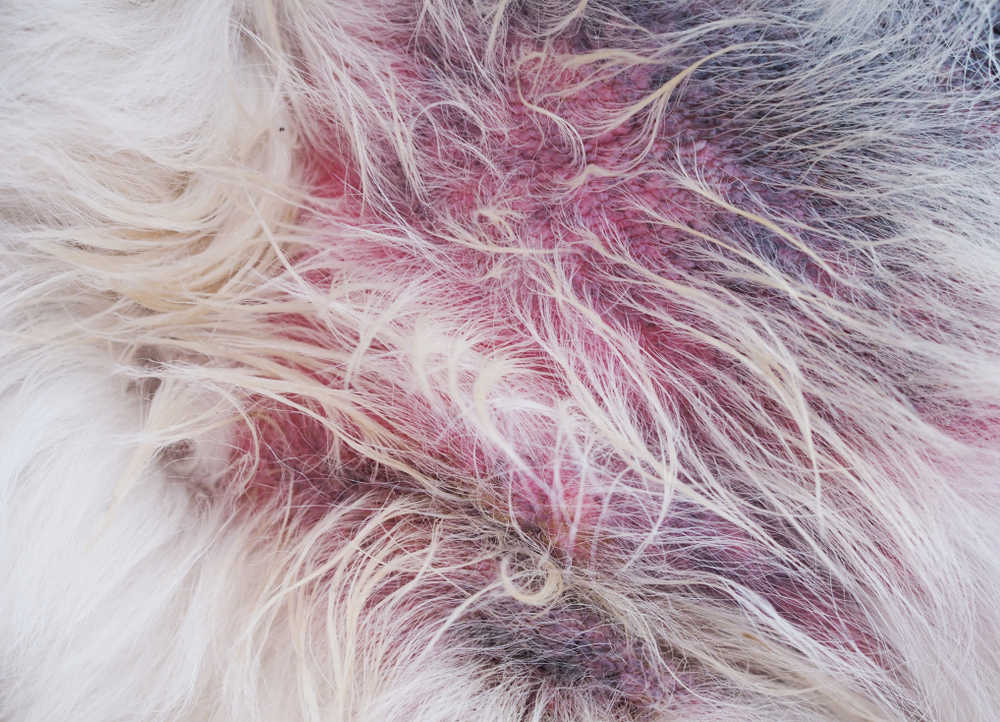
- Greasy or dry, flaky skin
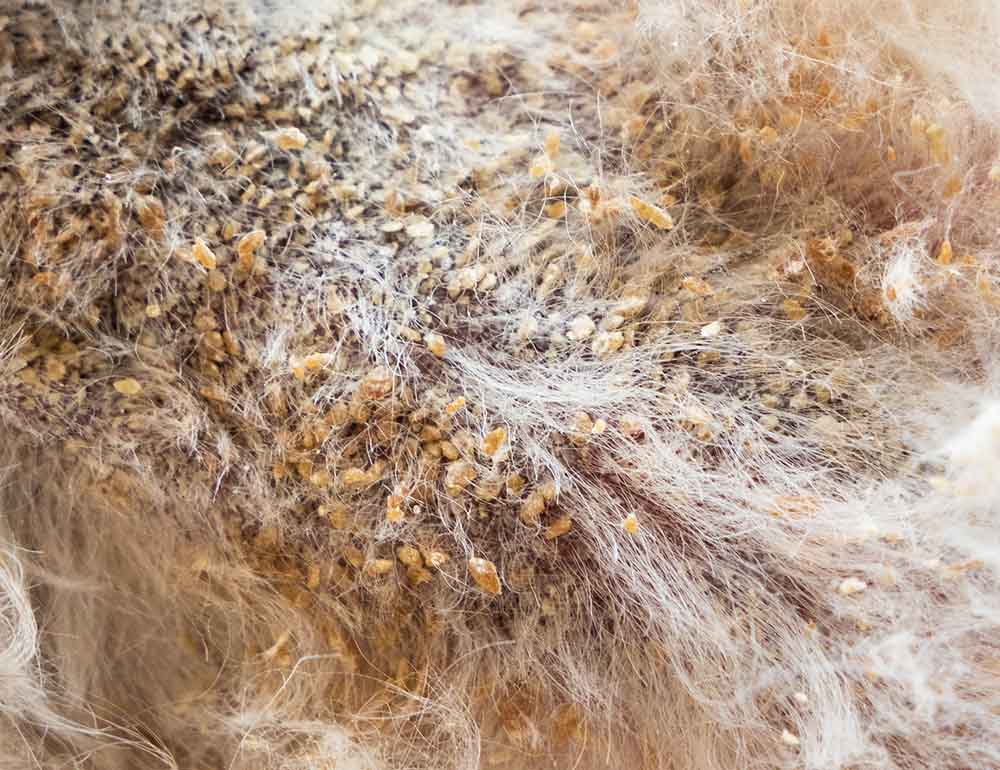
- Characteristic musty or cheesy smell
- Thickened skin or “elephant skin”
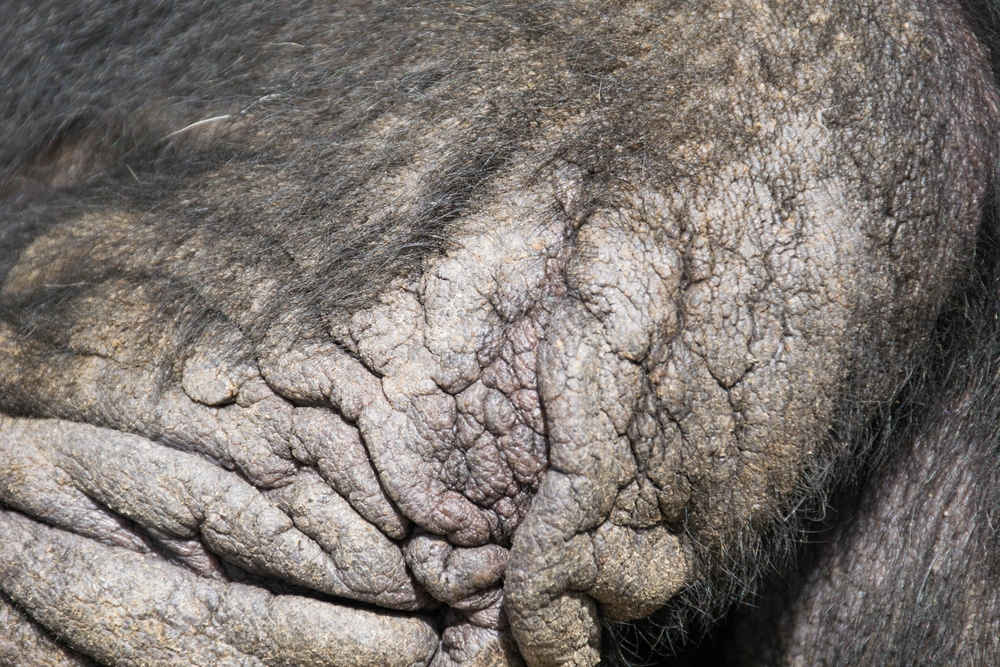
The picture below shows several crusty brown lesions caused by a yeast overgrowth:
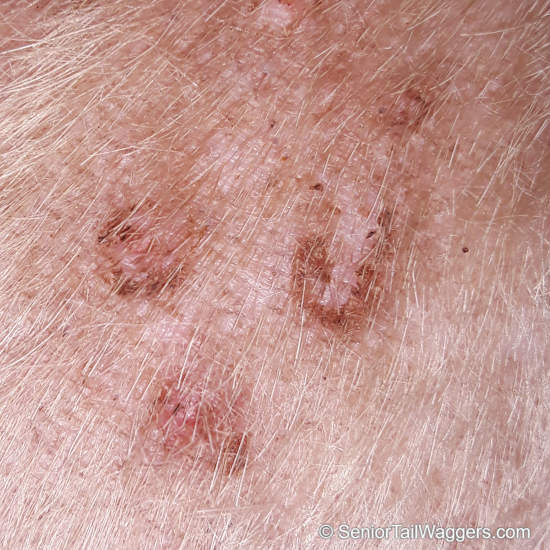
Black spots can also occur in some cases:
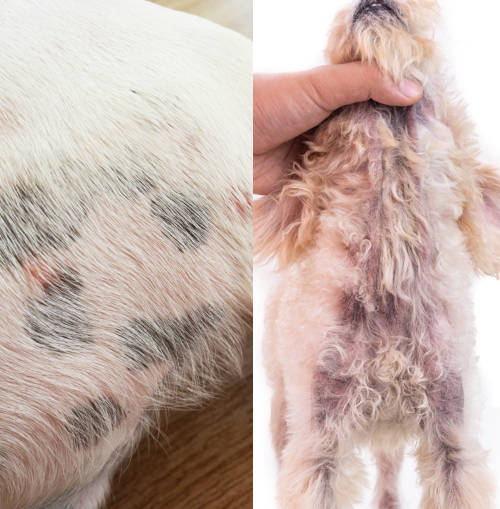
Related post: Black spots on skin caused by yeast infections.
Yeast skin infections also occur from a dog repeatedly licking a certain area of his skin. Many times the skin and hairs being licked will look maroon or red, this is known as porphyrin staining.
Is It Yeast Or Something Else?
So what else could be causing your dog to have red, itchy skin?
- Bacteria: It is almost impossible for your vet to tell by looking at your dog’s skin whether yeast, bacteria, or both caused the infection. The symptoms are virtually the same. Below is a bacterial infection on a dog’s paw:
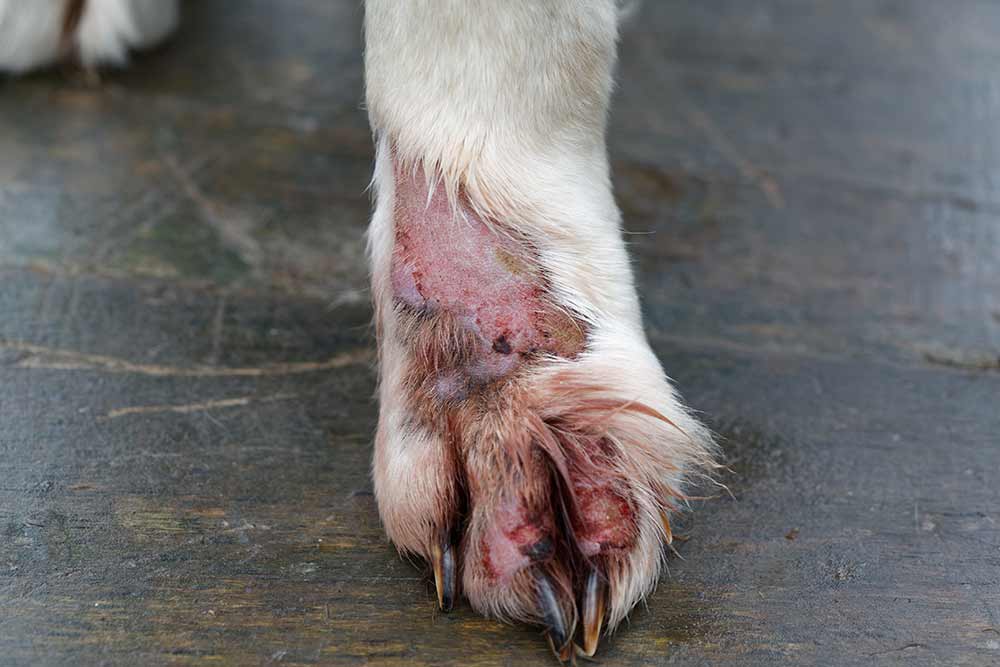
- Allergic skin disease: Dogs with allergies are often very itchy, lick their feet excessively, and are more at risk for bacterial and yeast infections since their skin’s immune defenses are weakened. Just because they have red skin doesn’t always mean there is an infection. Learn more about allergic skin disease.
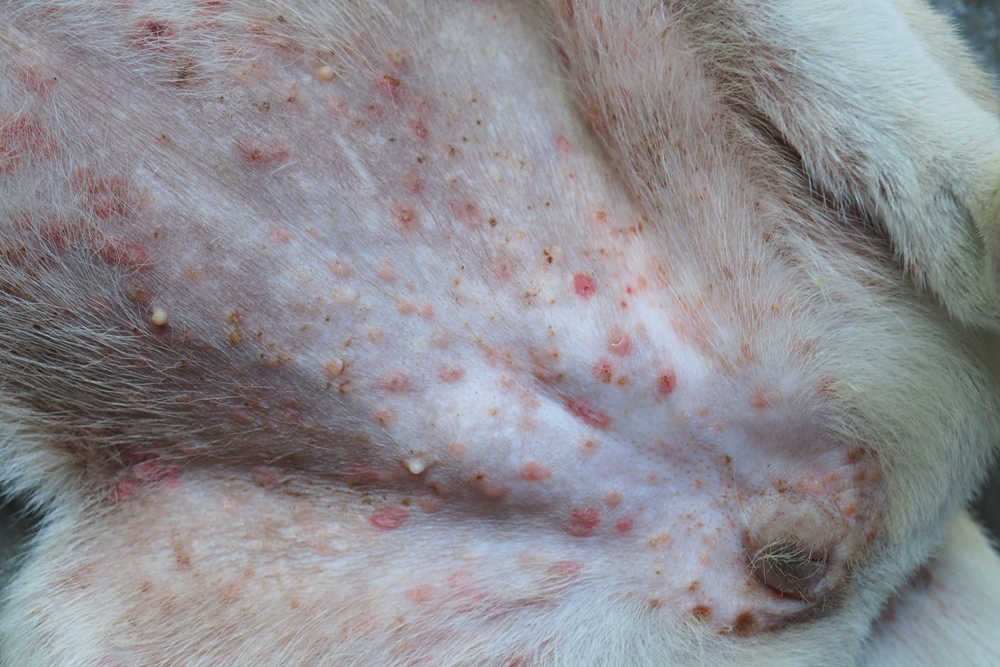
- Seborrhea: This is a condition where the skin’s sebaceous glands overproduce sebum, the skin’s natural moisturizer. Seborrhea can cause dandruff, flakes, or greasy skin, which can mimic yeast infections.
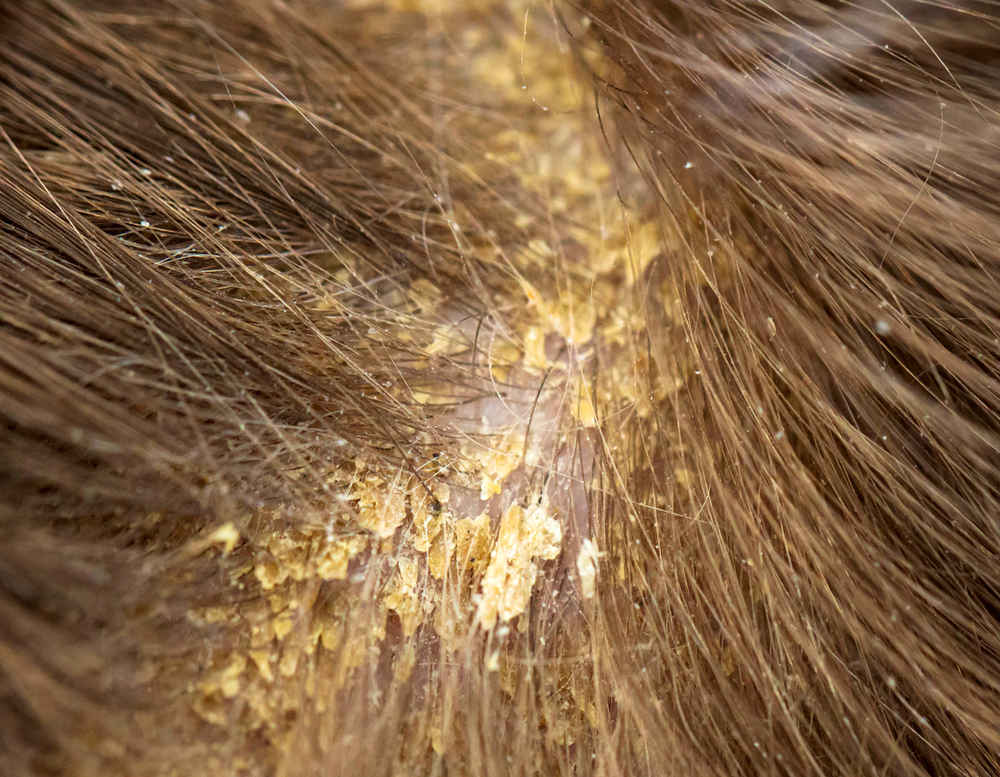
3 Steps You Can Take At Home if Your Dog Has A Yeast Infection
The good news is yeast skin infections are NOT contagious, so you don’t have to worry about spreading yeast from the infected dog to other pets or humans in the home.
You can take a few steps to keep your dog comfortable if he has a yeast infection.
1. Bathe the dog with an oatmeal-based shampoo to soothe the skin.
You can use this gentle shampoo while waiting for a vet appointment. Your vet may recommend continuing this shampoo while your dog is treated for yeast, or they may recommend an antifungal shampoo that specifically targets yeast. It’s important not to bathe your dog TOO frequently; once every 10-14 days is plenty, unless directed otherwise by your vet. Too frequent bathing can strip the skin of the healthy oils that protect it and worsen things.
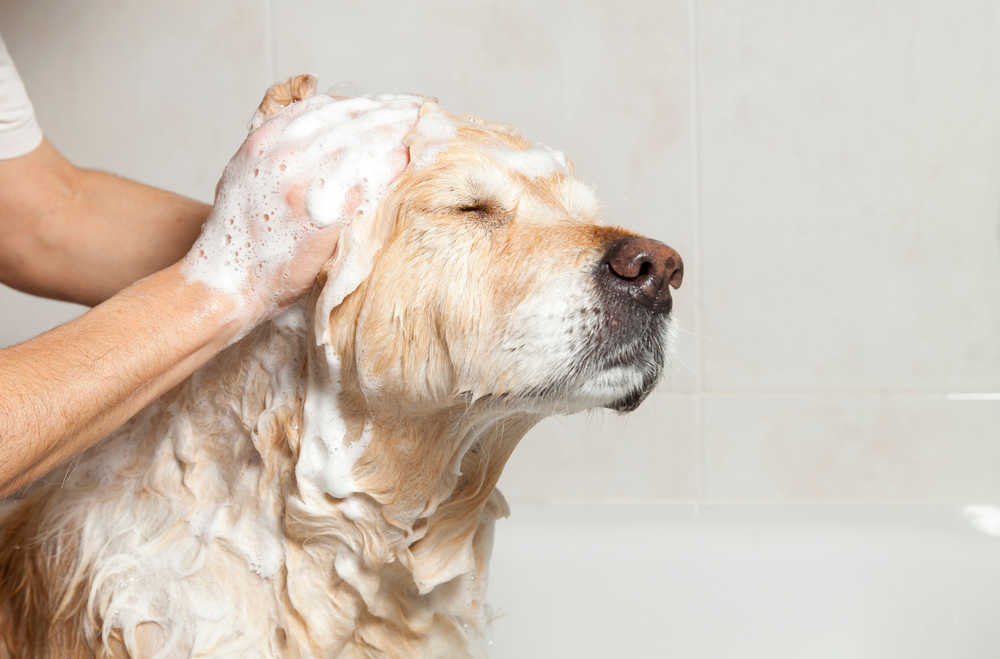
2. Put a cone on your dog.
Put a cone if your dog is scratching at their ears or licking his paws. This helps break the cycle of itch and licking and allows the skin to heal. Excessive itching can weaken the skin, introduce bacteria, and delay healing.
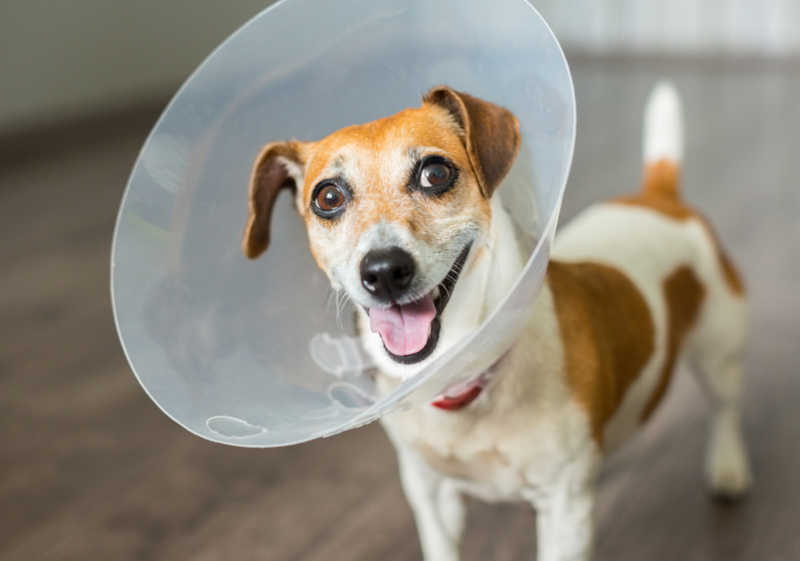
3. Use a non-medicated ear cleaner.
If your dog is bothered mainly by their ears and you suspect an infection, you can clean them once daily with a NON-MEDICATED ear cleaner until your vet can diagnose the infection. The ear cleaner must be non-medicated though, since certain medications can be toxic and cause deafness if the eardrum is ruptured. Always have your vet do an ear exam before starting any medicated ear cleaner. If you aren’t sure it is safe, call your vet first.
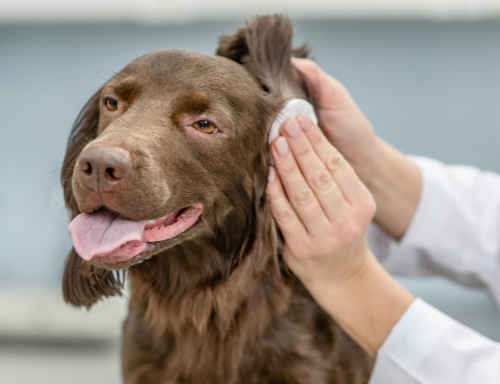
When Should I Call The Vet?
You should make an appointment with your vet if you are concerned about your dog’s skin or if they show any of the following:
- Worsening redness
- Discharge, pus, or oozing from the skin
- Crustings, pimples, or flaking
- Itching, scratching, or licking excessively to the point that it is interfering with daily life
When Malassezia overgrowth occurs on the dog’s skin (resulting in yeast infections), it is usually due to an underlying condition weakening the skin’s natural immune defense, like environmental or food allergies, chronic diseases like diabetes or Cushing’s disease, or thyroid disease. If you suspect that your dog has a yeast infection, it’s important to meet with your veterinarian to address the root cause.
Diagnosis and Treatment of Yeast Infections
Your vet will test to determine the cause of your dog’s skin issues. If they suspect an infection, they may perform a tape or slide impression that can then be stained with a special dye for viewing under the microscope. This image shows a tape impression for diagnosing certain skin diseases. The clear tape lifts the very top layers of skin along with any cells, bacteria, yeast, or parasites:
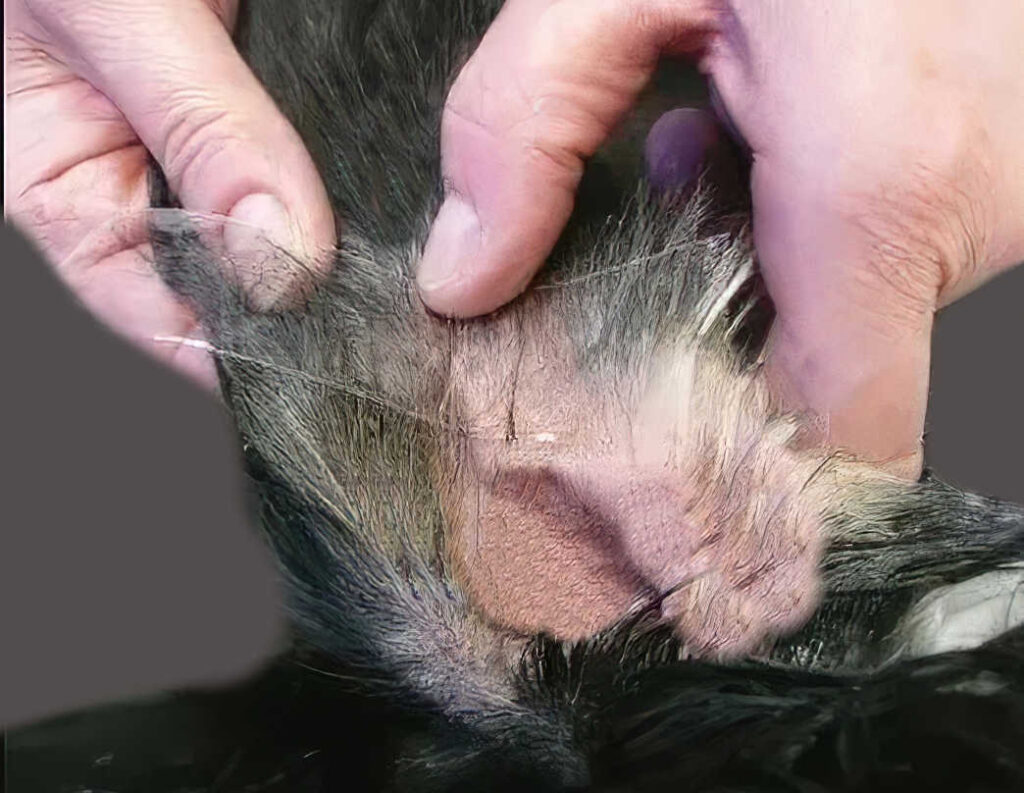
Your dog will need an anti-fungal to eliminate a yeast infection; an antibiotic only works for bacteria. Antifungals come in many forms – oral, drops (common for ears), shampoos, topical ointments, wipes, and sprays.
Which formulation your dog needs often depends on the location of the infection. Ear yeast infections are typically treated with ear cleaners and drops, while paw infections often involve ointments, sprays, or oral medication. Dogs with thick skin folds, like boxers and bulldogs, benefit from wipes to clean the moist skin folds.
Note: While treating your dog’s yeast infection with apple cider vinegar may be tempting, it is probably better to hold off and consult your veterinarian first. There is some thought that vinegar kills yeast by changing the skin’s acidity, but no scientific studies in dogs support this. Vinegar can also irritate the ear and surrounding sensitive structures, so it is best avoided.
How To Prevent Yeast Skin Infections
Unfortunately, we can’t prevent every skin infection in dogs, but there are steps you can take at home to help.
- Healthy diet: A healthy, well-balanced diet is critical for skin health. You can also talk to your doctor about whether your dog might need supplements like fish oils or other omega-fatty acids.
- Regular grooming: Keeping the coat healthy and free of matting and tangles, as well as regular bathing, can also help prevent skin infections
- Maintenance ear cleanings: This is especially important if your dog is prone to ear infections, swims a lot, or is a breed more prone to ear infections.
- Control any underlying diseases or allergies: Since allergies can be a significant factor in skin compromise, keeping allergies under control is critical for preventing secondary yeast or bacterial infections.
Related posts:
Disclaimer: This website's content is not a substitute for veterinary care. Always consult with your veterinarian for healthcare decisions. Read More.


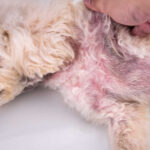
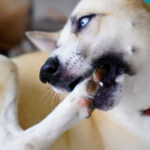
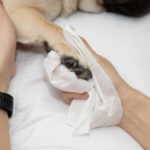

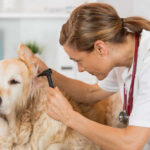
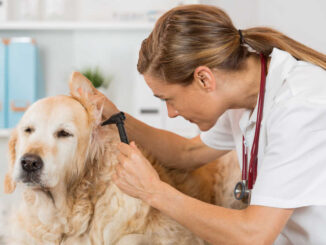
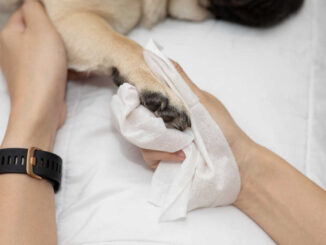
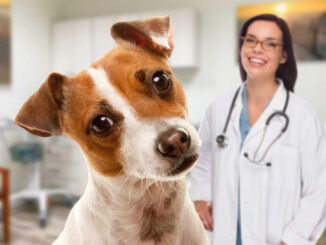
Be the first to comment